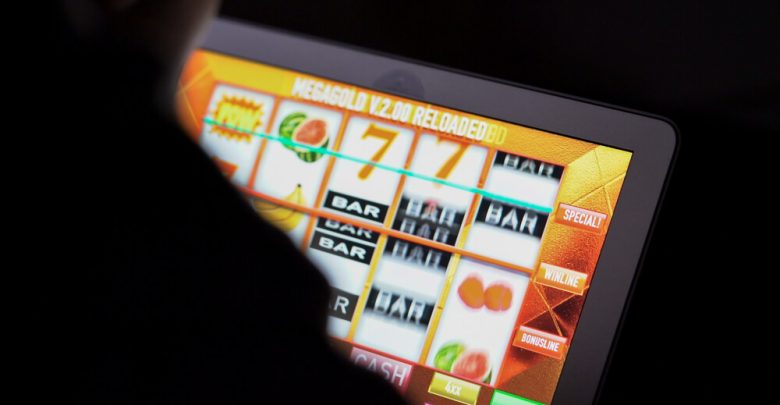5 tips on the technology behind slot machine RTP

Slots are the most popular way to play at online casinos. There are several reasons for this, from the sheer variety available to the chance of taking home a life-changing prize with the touch of a button.
But while slots are also known for coming down to pure chance, there’s a certain metric that can help you maximize your chances of winning.
It’s called RTP and anyone playing slots must understand how the technology works.
This guide will explain all you need to know, but let’s first describe what RTP is.
What Is RTP?
Return to Player (RTP) describes how often a player can expect to be paid back playing a certain slot machine. The higher the RTP, the greater chance of winning in the long-term. Likewise, the lower the RTP, the lower your chances.
The house edge is a common term in the casino industry. For example, French roulette games have a 1.35% house edge, meaning that every time you make a bet, the casino expects to win 1.35% of your bet every time.
RTP is on the opposite side of the house edge. So, if the game has a 4.5% house edge, then the RTP is 95.5%.‘
Always make sure you play slots with the highest possible RTP.
But that’s not all you need to know about RTP. Here are 5 other things about the technology.
1. Volatility And Hit Frequency
RTP tells you how much you should be paid out in the long-term. However, it can take a lot of spins to get to hitting this number.
This is because when slots are created, they have their own formulas that decide when they should be paying out. As such, one game may pay out more frequently but at smaller amounts, while another may not pay out that often, but when they do, they pay out generously.
This is what’s known as slot volatility. Those with frequent but small payouts are low-volatile slots, and those with fewer but larger payouts are high-volatile slots.
Then there’s hit frequency. This describes how often you hit a winning combination. You can find it online for winning combinations or to find certain features within the game like free spins and bonus rounds.
For example, a slot with a 10% hit frequency means that 10% of all games played will trigger a winning game over the long-term.
2. Variance
RTP takes both volatility and hit frequency into consideration. Understand though that because the games are completely random, the outcomes may not follow these metrics to the letter. It’s certainly possible for the following situations to occur:
- Playing 100 spins and trigger winning combinations 55% of the time rather than the expected 10%
- Playing 100 spins and not triggering any winning combinations rather than the expected 10%
This leads to another important metric to understand: variance. Due to the nature of slots, sometimes you’ll win big and other times you may not win for a while.
Volatility and variance are very similar. Slots with lower variance are less of a risk of losing a bet, whereas a slot with higher variance is higher risk but the payouts are greater too.
3. How RTP Is Decided
RTPS is based on math. The formulas decide how and when the payouts will be at over a large sample of bets and at specific levels.
So how can game providers decide on RTP?
To start, developers use a theoretical RTP parameter of 1 billion rounds on their servers to test the payouts. Then, in order to obtain a gaming license from the relevant authorities, that game must pass certification tests and an independent auditor must verify the simulations to ensure the RTP is correct.
Some authorities have brought in regulations to keep on the games’ RTP after the games have been released too. This is to ensure that the information shown to players about their chances of winning is correct. The United Kingdom Gambling Commission is such an example.
But there are sites out there like Wink Slots that track the RTP rates for you, so you can make an informed decision about the best games to play.
4. RTP Can Differ
Specific games and providers can differ on RTP. We’ll cover some details here and provide recommendations on what you should to ensure you have all the information about the game you’re looking at playing.
Today’s slots can vary their RTP based on four factors:
- Some providers certify their games at varying RTP levels. This enables casino operators to adjust the games to suit their needs.
- Other providers create games that make players choose certain in-game options that impact on the RTP. This includes their characters, the mode they play and more.
- Some providers vary their RTP based on the player’s bet size.
- Some providers vary their RTP based on the player’s paylines.
5. Random Chance Of Winning And Fair Payouts
The metrics discussed throughout this article are all theoretical; they’re based on millions and millions of spins.
Understand that no matter your outcome, whether you’re winning more or less than the expected results, is all subject to chance. The results are determined by the game’s Random Number Generator (RNG).
RNG ensures that every spin is random and without bias. The chances of winning are exactly the same every time to create a fair game.
Each spin is independent of the previous spins, regardless if they were made by you or a previous player. There’s an old casino myth about hot and cold machines; they don’t exist online, unless it has a different RTP than its base setting.
Conclusion
RTP describes the percentage of the wagered money on a slot machine that will be paid back to players over time. But understand that it’s a long-term figure. It may take a huge number of spins before your results come close to these expected results. Variance, volatility and hit frequency all come into play.
So keep all these things in mind the next time you head to the slots. The more you understand about RTP, the better you’ll choose your games.






